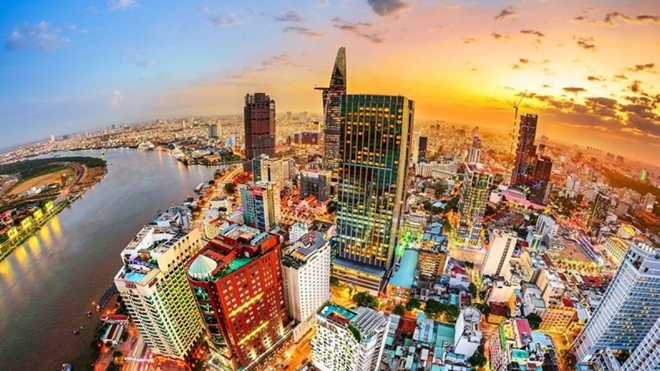ICAEW believe Vietnamese recovery prospects are brightest in Southeast Asia
- Vietnam, Russia discuss prioritised investment projects amid COVID-19
- 50 Korean CEOs seek greater investment opportunities in Quang Ninh
- PM Phuc orders speeding up of public investment disbursement
The remark has been released in the latest Global Economic Outlook report from Oxford Economics.
Southeast Asia's GDP growth is forecast to suffer a contraction of 4.2% this year, before improving by 6.4% in 2021. In contrast, Vietnamese GDP is expected to rise by 2.3% this year, with this trend seeing a further 8% increase in 2021.
 |
| ICAEW believe Vietnamese recovery prospects are brightest in Southeast Asia. |
The report states that despite economic activities now picking up, the strength of the rebound in terms of economic activity in the coming quarters is far from assured, particularly ahead in Q4, with this period expected to mark the end of the initial strong bounce in global trade and domestic activity seen in the aftermath of lockdowns being removed.
Furthermore, the pace of recovery in the second half of the year is expected to vary throughout the region, therefore reflecting the varying success in containing the COVID-19 outbreak and different strategies on how to exit lockdown.
The situation remains precarious in both Indonesia and the Philippines, with infections accelerating following restrictions being prematurely relaxed, thereby leading to a pause or reversal of reopening plans.
Elsewhere, Thailand, and until recently Vietnam, has convincingly contained the COVID-19 outbreak, with data indicating things are returning to pre-crisis levels.
The report outlines that in the nation, tighter movement restrictions remain limited only to areas that have recently witnessed a surge in infections, such as Da Nang.
Moreover, the Vietnamese economy is still enjoying growing, with manufacturing production 8% higher compared to Q4 in 2019, whilst production in both the Philippines and Thailand is down more than 20%, with Singapore enduring a fall of over 5%.
The country, along with Singapore, has a heavily export-oriented economy that will continue to benefit from a stabilisation in trade activities, as shown by a recent improvement in exports over recent months. The upgrade given to the outlook for China is also positive as exports to the northern neighbour in value added terms account for 10.3% and 7.7% of GDP in Vietnam and Singapore, respectively. In addition, Malaysia’s exports are also set to benefit from improving Chinese import demand and the electronics cycle.
In this context, Mark Billington, regional director of ICAEW in Greater China and South-East Asia, believes that further challenges remain ahead. Indeed, Billington stated, “The road to recovery for economies in Southeast Asia will be a long one, with existing US-China trade tensions, a long-term slowdown in global trade activity, and a prolonged COVID-19 pandemic weighing on the region’s growth prospects.”
In comparing the future prospects of each economy in the region, the ICAEW regional director noted, “While each region’s economy has suffered due to the crisis, the unique economic structures mean the crisis has played out in different ways. Ultimately, countries that can strike a balance between resuming economic activity and keeping the outbreak under control will see their economies bounce back faster than the rest.”

